Almost four years ago our family began its own amazing multi-generation migration: we moved from the homestead where we raised our two sons in a protected enclave of San Antonio to a downsized contemporary compound in unruly downtown.
Our Alamo Heights home had a beautiful half-acre lot with a magnificent butterfly garden that took years to nurture. It was sad to see the new owners rip out its specimen native plants and return it to its former state as a St. Augustine lawn. Part of the trade-off of making the traumatic move was that someday I would have a new wildlife garden and my own space to rear caterpillars and native plants, as well as a home more suited to our empty nest lifestyle. I’m glad to say that day is here.
On top of that, we needed a place for my 93-year-old father and 82-year-old mother. After researching the exorbitant costs of assisted living, John and Hilde Maeckle agreed to leave their tract home on the north side of San Antonio and join us at the family compound we now call Arsenal.
We sold our house in 78209 and bought an empty lot in 78204, just a block from the San Antonio River across from HEB world headquarters at the historic San Antonio Arsenal, a limestone compound that housed munitions for wars from the Confederacy through World War II. Then we began the arduous process of building a house–actually, two of them–from the ground up.
Our son, Nicolas Rivard, had just graduated from the University of Texas architecture school. Since we needed someone to design our future two-home complex, we figured, naively: how could we NOT use our own son as the architect? It’s amusing, gratifying and sometimes aggravating to see how the reality has departed from the vision Nicolas and our family imagined.
The design-build process began in late 2011. The tight, alley-lined lot in downtown San Antonio created special challenges of staging and parking. A newbie architect and unusual design and materials made for slow progress. The public living area of our home is crafted from compressed earth block–that is, bricks made from soil. The extraordinary building material created its own obstacles, but ultimately was worth it. The place has the vibe of an ancient mission.
And then good fortune threw us a wild card. Nicolas was accepted to graduate school at Harvard, then to an amazing fellowship in Rwanda. For two-and-a-half years, these exceptional learning opportunities took him far from home and the project we had started. It forced us to make many decisions via Skype and email rather than in-person and on site. We made many mistakes.
But that was all part of the adventure, as were the twists of life and unanticipated turns in our careers. During this time, my husband and I both left our jobs and started a communications consulting firm, The Arsenal Group. We launched a local news website, The Rivard Report. None of these career moves were planned when we launched the complex construction of our new home.
I kept sane by continuing to pursue my outdoor passions and working on this website, the Texas Butterfly Ranch. More change erupted as I rejoined, then left, the full-time workforce, only to return to consulting again. Meanwhile, our other son, Alexander, returned from a two-year job in Boston where he learned how to cook, and Nicolas also came home to roost–just as the home he had imagined in blueprint was nearing completion.
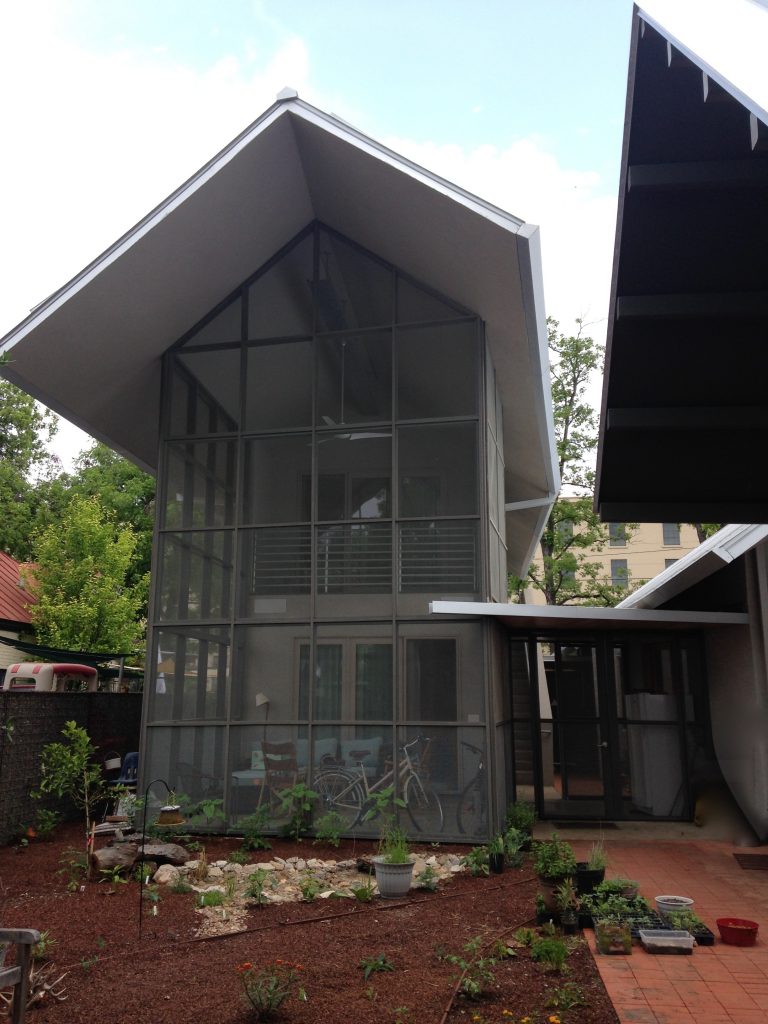
Reality: screened porch, rain garden, butterfly habitat coming soon. WATCH THIS SPACE. Photo by Monika Maeckle
First came the Casita for my parents. My father’s health continues to decline, and my mom, Oma, as we call her, holds down the fort. She has been a trooper to endure this years-long building process while also caring full-time for Opa.
Next, we crafted our house–two structures divided by a lovely atrium and connected with a two-story screened-in porch. My parents made their move in March of 2013. We finally made the Arsenal home in November of 2014 even though it is still a partial construction site. The final phase includes a car port and my much-anticipated Mariposario, or butterfly house. (For those unaware, mariposa means butterfly in Spanish.)
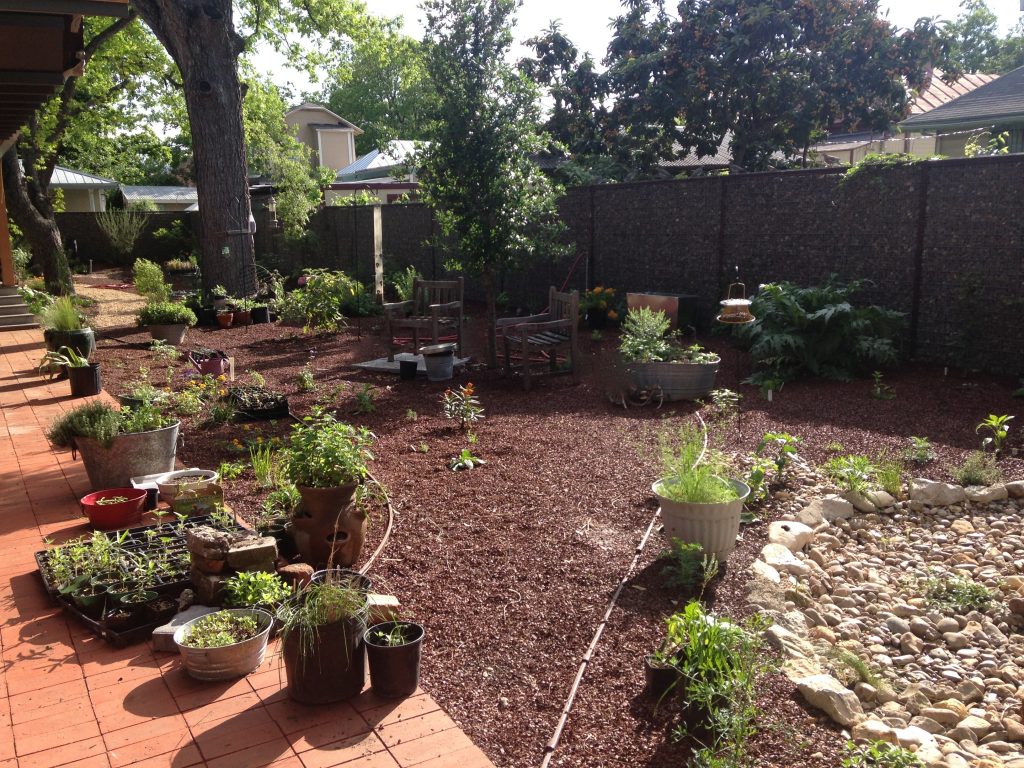
Backyard wildscape and butterfly garden has just been planted. That’s pecan shell mulch. Photo by Monika Maeckle
For years my husband has indulged my affinity for insects in the kitchen and living room. When we lived in Alamo Heights I would bring potted milkweeds in for prime placement near windows. When the caterpillars were about to go chrysalis, they would be elevated to the coffee table for prime viewing so we wouldn’t miss the moment, often toasting the occasion with a sip of wine.
More recently, while living in multiple rental apartments with little outdoor space, we’ve had caterpillars marching across the rug, Monarchs hatching on curtains, and even a Black Swallowtail forming its chrysalis on the electrical chord of my flatiron–25 feet from its host plant. A lesser man would have shut this down, but my husband, Bob Rivard, has been extremely patient. Thanks, honey!
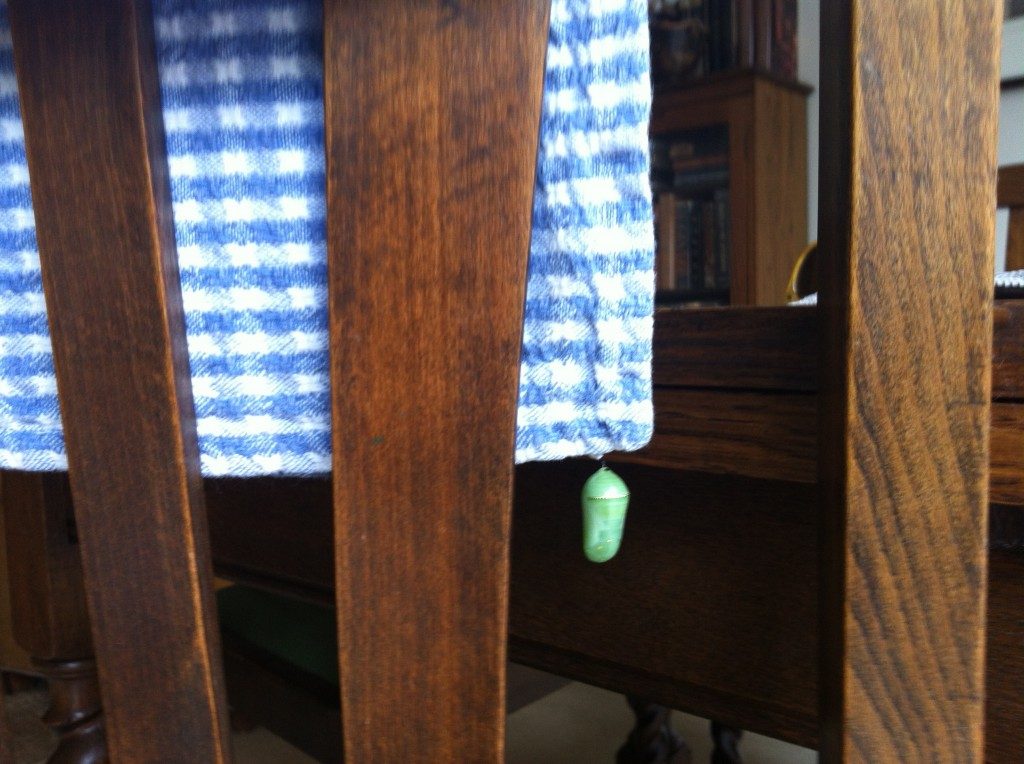
Not any more: Monarch chrysalis on napkin. Now my caterpillars will have their own place to go chrysalis. Photo by Monika Maeckle
My Mariposario and new wildlife garden has made the long, circuitous, multi-generation trip worthwhile. As we finish up the landscaping with help from Charles Bartlett and Albert del Rio of Green Haven Industries, I am FINALLY getting my own place to do my butterflying.
In the coming months, I’ll be posting photos and dispatches from the garden and my spanking new Mariposario–a fancy potting shed made literally from river rocks and hog panel. Architects are not keen on showing a project when it’s not-quite-finished because often the photos don’t do their work justice. I can’t resist offering a quick peek, though, as I know that fellow gardeners much appreciate how projects grow and evolve. So here you go.
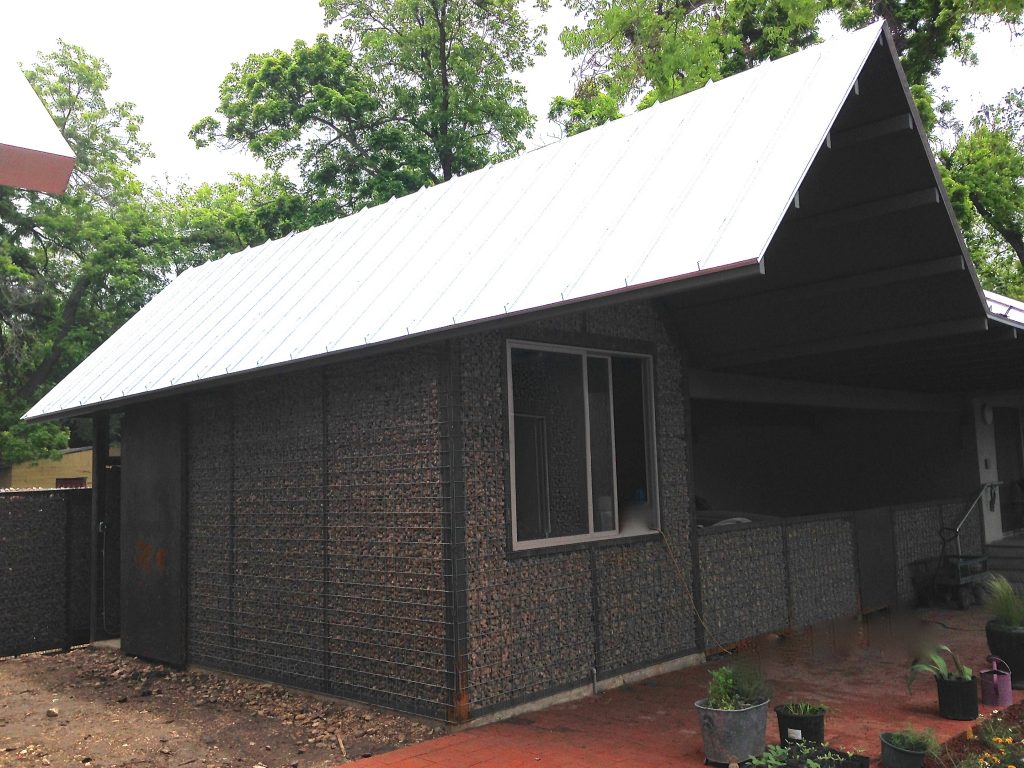
Mariposario: This is where the caterpillars will live. Can’t wait to install some milkweed and passion vine along the gabion wall of this final butterfly garden at our downtown home. Photo by Monika Maeckle
It’s almost done, and it’s quite special. Our son chose gabion panels as the building material, a riff off the style fencing we used for our new home. Made of metal, Texas river rocks, and hog panel, it creates privacy and security in an area of San Antonio riddled with vandalism and revelers.
This special place made of earth, rocks and metal will serve as a place for my tools, for my caterpillars, my family and for me. It joins our Llano River ranch and all wild spaces in between as the collective location of the Texas Butterfly Ranch.
I look forward to sharing it with you.
Related posts:
- Crazy Chrysalises in Surprising Places
- Mostly Native Urban Butterfly Garden beats Boring Lawn Anytime
- Year in the Life of a Butterfly Garden
- Use Solarization to Convert Drought-damaged Lawn to Butterfly Garden
- Late But Great Wildflowers to Greet Monarchs and other Pollinators
- Monarch Butterfly News Sparks Extreme Interest in NAtive Milkweeds
- Tropical Milkweed: To Plant it or Not, it’s not a Simple Question
- How to Raise Monarch Butterflies at Home, Part One
Like what you’re reading? Follow butterfly and native plant news at the Texas Butterfly Ranch. Sign up for email delivery, like us on Facebook, or follow us on Twitter, @monikam.

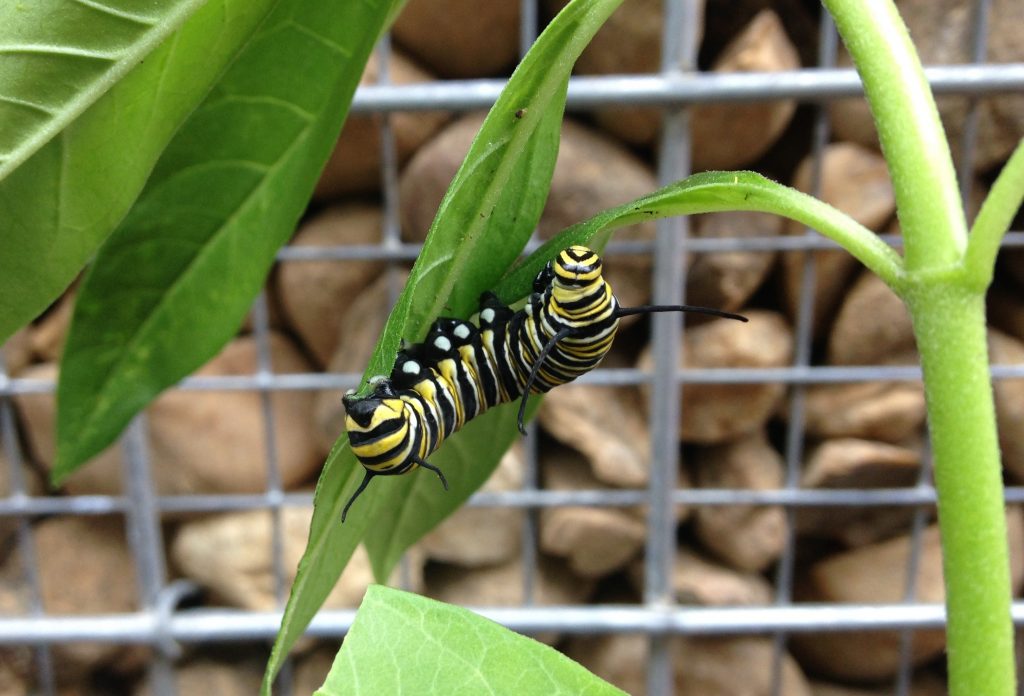
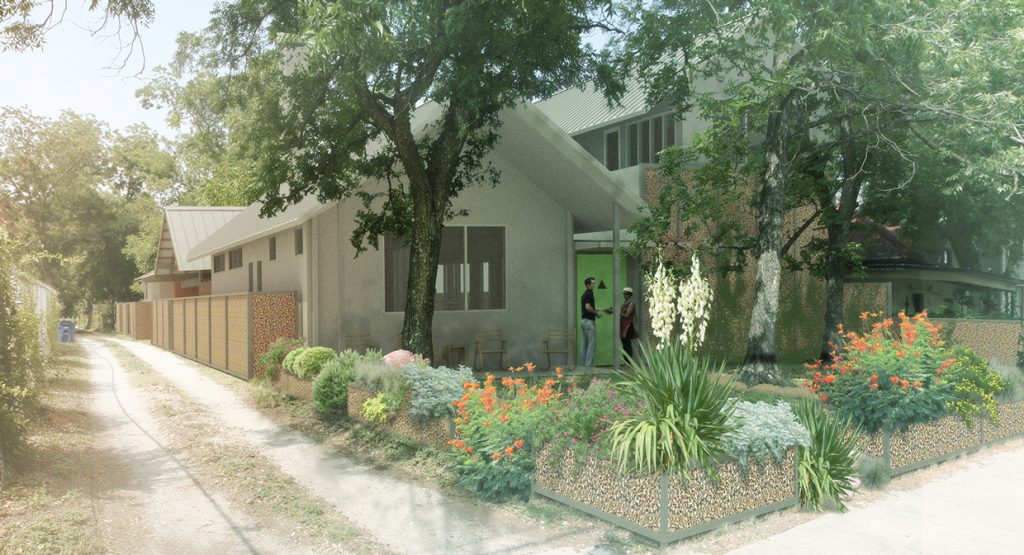
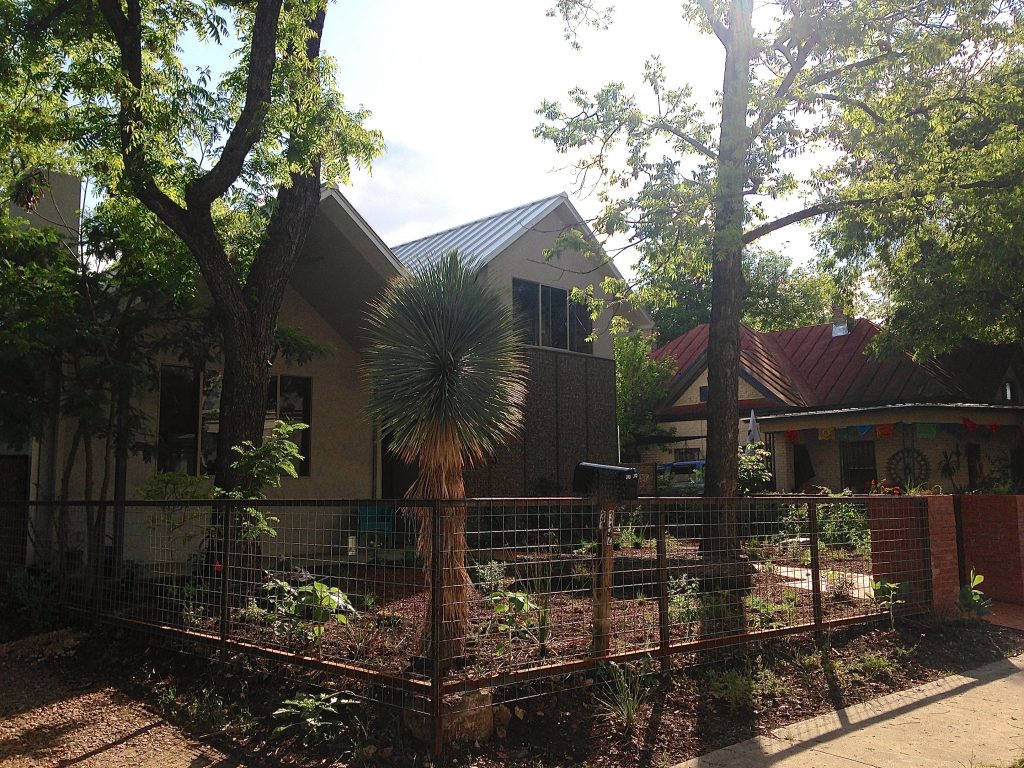
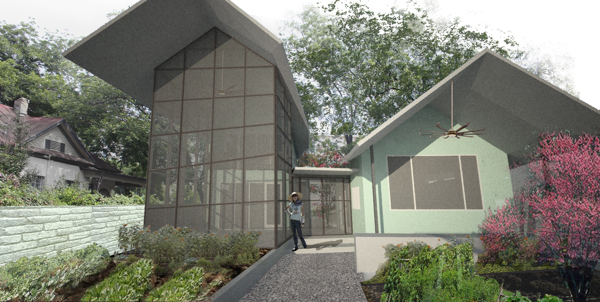
What you are doing is amazing. I love the gabion walls and look forward to seeing the new plantings. Happy spring!
Wow, thanks for all the kind words, everyone. It has been a long ride, but so worth it. Your support makes it so. Keep checking in, and spread the word. Hasta pronto!
Woo Hoo!!!
Congratulations!!!
Monika, it’s simply gorgeous! I can’t wait to see it in person soon!
Thank you for sharing the progress! I am so excited for you and what your amazing garden will become! Thanks for caring for the mariposas! 🙂
Thank you for sharing your life, your family, and your dreams with us. You are an inspiration
Monika! How fantastic – can’t wait to hitch a ride with T and come see the compound in person! When is the house warming?
Monika,
This is amazing! All you’ve been working on for so long. You’ve appeared so patient about it all. Love what you are doing.
Great job! Saw my first girl today in my garden here in Manchaca. She was all over the honeysuckle and left a few eggs. I have about 20 milkweeds in different stages of growth that I have been nursing along. Thing is…. if she is the only one this spring, it is well worth the trouble.
It is amassing you patient for the undertaking. I just love butterflies
All I can say is WOW!
Love it! What a transion it has been & will continue to fruition, if something like this creation really ever ends or just keeps changing & improving. Congratulations and ENJOY your new personal nabitat!
What a great way to describe it. “Personal habitat.” Lovely and apt. Thanks for writing.–MM
I haven’t met you but I love you already and I am so very impressed by what you have accomplished! You are an inspiration!
Monika! That is a lovely space for your family and the butterflies. Que mariposario tan lindo. I would love to be a butterfly to live in it even if just for a short life cycle…
Gracias a todos for the lovely support!
You go, Monika! What a wonderful project and well worth all the effort. Toast to your vision and to you–and Bob, Nick, Alex, Oma and Opa!
Lisa and Katy, thanks for the kind words. Xx MM
Oh, Monika,
It looks glorious! I can’t wait to see it for real. I gasped when I heard that the people who bought your house in Alamo Heights tore out the butterfly gardens. No words, just disbelief. Congratulations to the whole Rivard clan…please give my love to the family.
I enjoyed reading of your adventures. I experienced the same loss when we sold our home in RGV to move back to Denton County. We sold to an investor because he had cash. Right after we left, he hired a yard man to rip out every shred of our beautiful native gardens except 2 Vassey Adelia Trees that my friend and neighbor begged him to leave. I hope the Mexican Bluewings reminding him of what was lost.
Monica,
I have about 20 very early caterpillars (I expected them in October), and so far 2 have had problems in one of their instar stage. The face is covered in black or green liquid and they have weird antenna, and end up arching backwards at an awkward angle. their mandables are working constantly. the first one lived at least 24 hours (I couldn’t bear to kill it and thought I’d let nature take its course). it did not (or could not eat) and finally died. now there’s another one. I’ve never run across this disease before. I know i have clean healthy milkweed.
I did notice that the tiny 3/16 inch ones can be easily hurt and can bleed when moved improperly. they survive usually but have a scar on the side throughout the instar process. could i have crushed something inside that caused this to happen? i have since learned that my fingers are not delicate enough to handle them at this size. I have a picture if you tell me where to send it.
can you help?
thanks,
br
You should destroy the caterpillars by freezing them or flushing them down the toilet and sterilize your containers and possibly even cut your milkweed back. Sounds like a pesticide issue, but could also be a disease. They obviously are sick; allowing them to live only perpetuates the unhealthy cycle. I know, it’s difficult, but for the best. Otherwise you will continue to just raise sick caterpillars and infect others. Start over.
Also, you should avoid handling the caterpillars if you can. Use a milkweed stalk, leaf, stick or even a clean small paint brush to coax them to hitch a ride, and then move them to fresh host plant or a new place. The more you handle them, the more likely you are to damage or transfer germs to them and each other.
Nature is cruel. Good luck.
thanks so much Monica. I read somewhere that uneven head antenna means they have OE and that i should destroy them. i have about 3 like that. they are eating though and the others did not, but maybe i’ll separate them anyway.
also: yesterday i tried drowning the poor guy and literally held him under for several minutes till he stopped moving. Then, I put him outside (I hadn’t read about OE yet). much later i came back and he was still alive! so i took him back in and kept him separate with some leaves which he did not eat, still. i just used a big rock (which I may never pick up). but wow. what a fight to live! this is hard!
Love your butterfly house! and I love your blog. thanks for doing all this for us butterfly people.
sincerely,
br